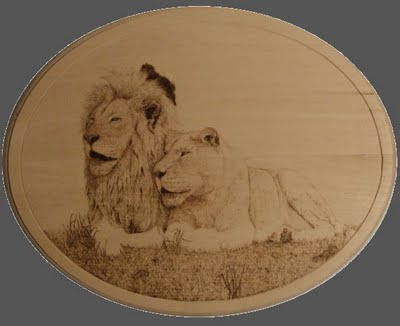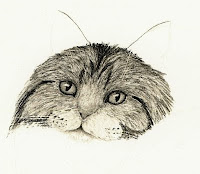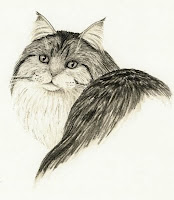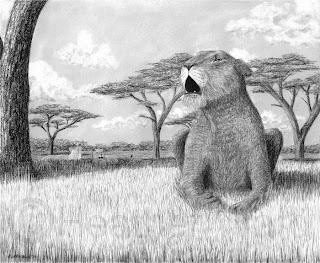I've been pretty busy lately moving my website over to
my own domain name (finally!) and updating all my links to it from all the art sites I belong to, not to mention some personal things that got in the way. I haven't had much time for drawing or blogging as a result, but all that is done for now. So, since I don't like to go so long without a post, I'll just explain what's in progress.
First of all, yes I'm still working on the colored pencil
coral reef drawing. It has taken a back seat of late, but I plan on increasing the time I spend on it in the next few months. I figure I'm about a third done, and the next few species to add will be branch coral (probably white), the red lionfish, and then an anemone or two.
Next, I have laid out a very large pair of zebras. I'm really excited about this one, and I wish I had more than a sketch to post of it. I found a large piece of gray matboard hiding in the back of my closet, and I am going to use both black and white charcoal.
I like to have a small drawing going, too, so I can feel some accomplishment while the larger drawings take so long. This one is in sketch phase - I still haven't finalized the pose - but it will be a pair of sand cats. Sand cats are one of the smallest species of wildcats in the world and live in the deserts of the Middle East and northern Africa.
Then I have a still-life in pause right now. I was meditating on how I could improve my drawing and this still-life flashed before me. It took a few weeks to get all the materials and set it up, and I've sketched it on the paper I'll be using, but I haven't had the motivation to start. It could be that still-lifes (still-lives?) just don't interest me, or it could be that I don't know how to start, or it could be that I'm a little nervous about treading on unfamiliar territory. But it has been started, so I'm at least going to finish it.
And finally I'm working on a series of step-by-step drawings of various animal textures in pencil and charcoal that I will put into drawing tips and tutorials and, with any luck, a book. I've done a few eyes and feet so far, and I'll be sure to put lots of types of fur in, too. I figure all the drawings should take me close to a year to finish, and then a few months to add text. It will be great practice for me, too. And yes, there will be a page for the indenting method, I just haven't done that one yet.
So I apologize for not having any photos to post, but it seems that most of my work is in the early phase of completion. Next time, definitely.

 Finally I can reveal the work I did for Christmas gifts. These first two are woodburnings done on commission. Ollie is a Welsh corgi, an adorable fluffy breed of dog in my opinion. Because of the light color of his coat, I decided a dark background would bring him out more. I'm not sure if Kahlua is any particular breed or a mix, but his dark coat made it easier to leave the background plain. I loved the floppy ear!
Finally I can reveal the work I did for Christmas gifts. These first two are woodburnings done on commission. Ollie is a Welsh corgi, an adorable fluffy breed of dog in my opinion. Because of the light color of his coat, I decided a dark background would bring him out more. I'm not sure if Kahlua is any particular breed or a mix, but his dark coat made it easier to leave the background plain. I loved the floppy ear!














































